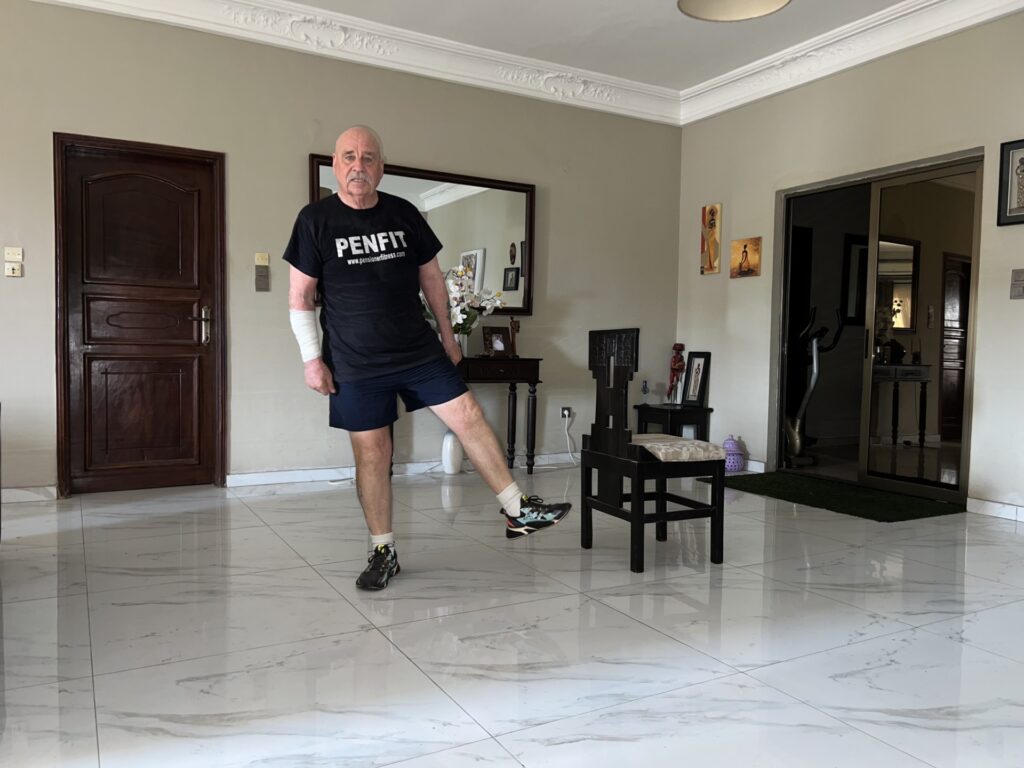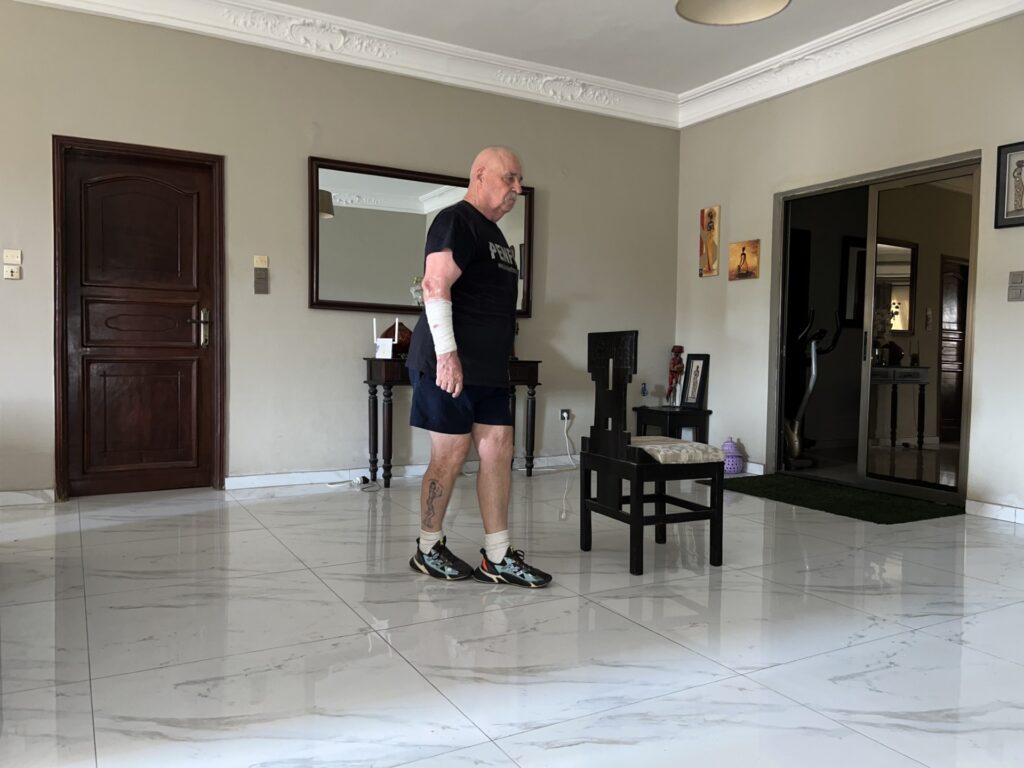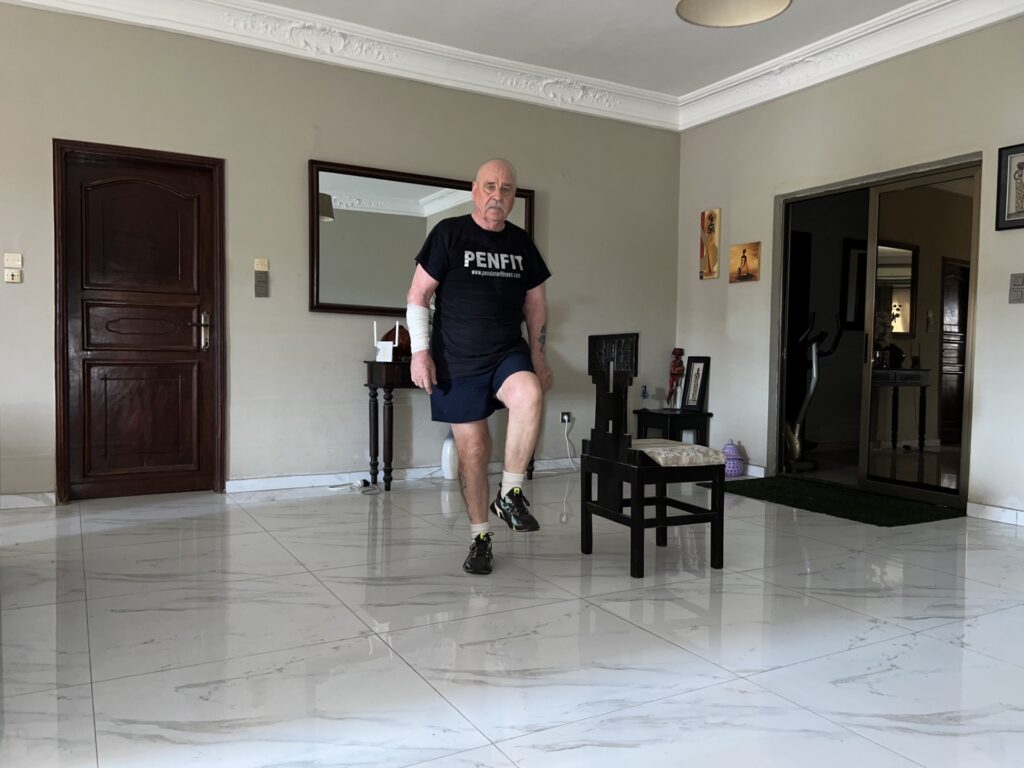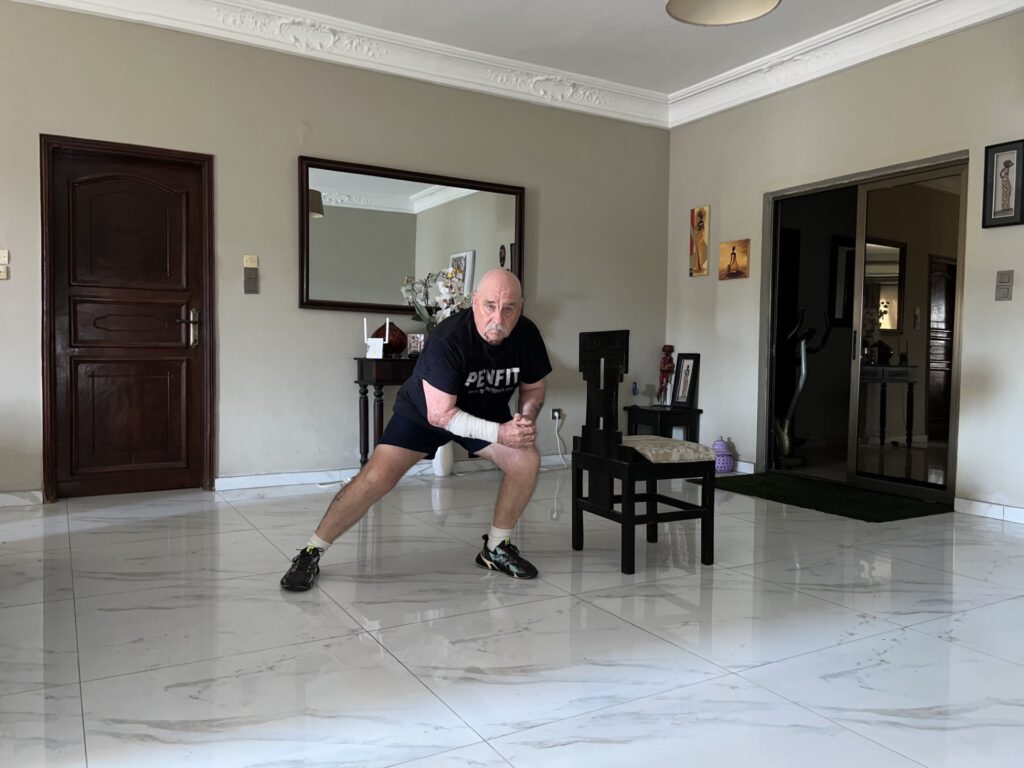
Loss of Balance Skill as we Age is a Serious Problem
Balance is a Skill. And sometimes we need to relearn that skill, because In the UK, around one in three adults over 65 will experience at least one fall a year, with many resulting in serious injuries such as fractures or head trauma. These falls can be life-changing, leading to reduced mobility, increased dependency, early admission to care homes and many result in fatallity
According to the U.S. Centers for Disease Control and Prevention(CDC) and other falls research: Fourteen million, or 1 in 4 Americans age 65+, falls each year. Falls are the leading cause of fatal and non-fatal injuries among older adults. In 2021, falls caused 38,000 deaths among those age 65+. Maintaining your ability to balance is key to longevity.
Why Do Older Adults Lose Their Balance Skill?
Balance is a Skill. As we age, several factors contribute to decreased balance, including:
- Muscle Weakness: A natural loss of muscle mass (sarcopenia) reduces strength and stability.
- Vision Changes: Diminished eyesight affects depth perception and spatial awareness.
- Inner Ear Issues: The vestibular system, responsible for balance, may deteriorate over time.
- Joint Stiffness and Arthritis: Reduced flexibility and joint pain can limit movement and coordination.
- Neuropathy: Conditions such as diabetes can cause nerve damage, leading to numbness and instability in the feet.
- Cognitive Decline: Dementia and other neurological conditions can affect coordination and awareness.
- Side Effects of Medications: Certain drugs, including blood pressure medications and sedatives, may cause dizziness or drowsiness.
The Dangers of Poor Balance
Balance is a Skill. Poor balance significantly increases the risk of falls, which can have severe consequences for older adults:
- Injury Risks: Falls are the leading cause of fractures, hip injuries, and head trauma in older adults.
- Loss of Independence: Fear of falling may lead to reduced activity levels, increasing frailty and dependence on others.
- Hospitalization and Surgery: Many falls result in long hospital stays and invasive treatments.
- Emotional and Mental Health Impacts: Anxiety and depression can arise from the fear of falling and limited mobility.
Increased Mortality: Studies show that serious falls can reduce life expectancy due to complications from injuries and reduced activity levels.
How to Improve and Maintain Good Balance
Balance is a Skill. As early as our 30s, we begin to lose that all-important muscle mass, (Sarcopenia) as well as experience age-related deterioration in the visual, somatosensory, and vestibular systems. “The decline is very gradual at the beginning, but by the time you hit 65, the curve drops steeply,” This is where balance training comes into play. It’s like learning to play an instrument:
So then, “You need to create appropriate neuromuscular connections—that is, links between your brain and muscles,” This is where balance training comes into play. It’s like learning to play an instrument: “You need to create appropriate neuromuscular connections—that is, links between your brain and muscles,” “Then you need to practice to keep those connections from deteriorating.”
Exercises to Improve Balance
Balance is a Skill. The body systems responsible for balance can be affected by gradual changes due to ageing or side effects of medications. By the way, there are also many health problems that can lead to unsteadiness on your feet. But many stability problems caused by aging or conditions such as arthritis, stroke, Parkinson’s disease, or multiple sclerosis respond well to exercises designed to improve balance. In addition, other balance-strengthening activities are routinely taught in classes held at many senior centers. For example:
- Walking, biking, and climbing stairs strengthen muscles in your lower body. A recumbent bike or stair stepper is a safe way to start if your balance needs a lot of work.
- Stretching loosens tight muscles, which can affect posture and balance.
- Yoga strengthens and stretches tight muscles while challenging your static and dynamic balance skills.
- Tai chi moves, which involve gradual shifts of weight from one foot to another combined with rotating the trunk and extending the limbs, offer a series of challenges to improve your balance.
Weight Shifting
This exercise works by stimulating proprioceptors in your muscles and joints, which are sensory receptors that respond to position and movement. As you shift your weight, your brain receives and processes this information, enhancing your sense of body awareness and balance.

HOW TO DO IT
- Stand with feet hip-width apart.
- Shift weight to one side while keeping the other foot off the ground.
- Hold the position for up to 10 seconds.
- Return to the starting position and repeat on the other side.
- Do this 3 times each day.
Heel To Toe Standing
The goal of this exercise is to maintain good posture (stand tall) and minimize your sway, but not be stiff and tense.

HOW TO DO IT
- Stand on a firm surface with your dominant leg directly in front of your other leg,
- Heel to toe, as shown in the photo above.
- Focus on keeping equal pressure between the heels and balls of your feet.
- Hold in this position for 30 seconds
Single Leg Stand

HOW TO DO IT
- Stand with your feet hip-width apart and your arms at your sides
- Have a chair close for safety and balance support
- Lift one foot off the ground and balance on the other foot.
- Hold the position for 10 seconds increase the time as you improve
- Switch legs and repeat for another 10 seconds
- With practice you will be able to increase the time to 20 or 30 seconds
Side Lunges
If you want a body-weight exercise that targets both your inner thighs and glutes, the lateral lunge checks all the boxes. This functional move also works on balance and flexibility — and can be made into a strength-focused exercise by dumbbells. But today we are focused on balance.

HOW TO DO IT
- Stand with your feet at hip-width distance, toes facing forward.
- Place your hands on your waist or out in front.
- Shift your weight to the right and step to your right with your right leg.
- With a flat back, bend your right knee and shift your hips back, keeping your left leg straight.
- Keep your toes pointed forward on both feet.
- Press into your right heel to return to standing.
- Either do all your reps on this side or alternate legs.
- Repeat 10 times each side, for two to three sets.
Video.
Pensioner Fitness Awards
THE BUSINESS CONCEPT, BEST IN BUSINESS AWARDS
- “MOST INSPIRING SENIOR WELLNESS WEBSITE 2023“
THE GLOBAL HEALTH AND PHARMA, FITNESS AND NUTRITION AWARDS
2. “BEST SENIOR FITNESS AND NUTRITION SPECIALIST 2023“
THE MIDDLE EAST AND AFRICA BUSINESS AWARDS
3. “ MOST INCLUSIVE FITNESS PROVIDER 2023″
THE CORPORATE LIVE WIRE GLOBAL AWARDS 2023/2024
4. ” FITNESS ADVISORY PLATFORM OF THE YEAR“ 2023/2024
In Conclusion
Balance is a key component of healthy aging. While natural changes occur with age, there are many ways to improve stability, reduce the risk of falls, and maintain mobility. By staying active, making simple lifestyle adjustments, and ensuring a safe home environment, older adults can continue to enjoy independence and longevity.
Take control of your balance today—because staying steady means staying independent and thriving in later life.
Important Note *
Remember that everyone is different, it is ultimately YOUR RESPONSIBILITY to find what your body responds to. So please do your due diligence before trying anything new, including getting Medical Advice to ensure your safety and peace of mind.
Connect with me and leave a comment